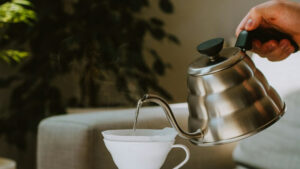
Which Type Of Materials Can You Use To DIY Your Travel Kettle?
Every travel kettle is a potential canvas waiting to be transformed into a piece that not only brews your favorite drinks but also showcases your

For many people, being able to enjoy a hot cup of tea or coffee while traveling or commuting is a must. Travel kettles provide the ability to heat up water and prepare hot beverages on the go.
When choosing a travel kettle, two of the most popular materials are stainless steel and silicone. But which type of travel kettle results in better-tasting beverages?
In this blog post, we’ll compare stainless steel and silicone travel kettles to determine which provides a better taste when making tea, coffee, or other hot drinks on the go. We’ll look at factors like heat retention, ease of cleaning, durability, and potential impacts on flavor.
By the end, you’ll have the information you need to decide whether a stainless steel or silicone travel kettle is better suited for your needs and taste preferences.
One of the most important factors in brewing tasty tea or coffee is having proper hot water. If the water temperature is too low, it can result in weak, flavorless drinks. Here’s how stainless steel and silicone travel kettles compare when it comes to heat retention:
Stainless steel is known for conducting heat very well. Once hot water is added to a stainless steel travel kettle, the metal helps retain heat extremely well. The walls of the stainless steel kettle prevent heat from dissipating rapidly.
When you pour water out of a stainless steel kettle after heating, you typically only experience a minimal drop in temperature. This is ideal when you want piping hot water for beverages like black tea or coffee. Excellent heat retention means you can expect a hot, robust cup of your favorite drink even while traveling.
Silicone travel kettles don’t retain heat nearly as well as their stainless steel counterparts. Silicone is an insulator, meaning heat doesn’t conduct through it well. While the kettle can get hot initially, that heat is quick to dissipate from the thin silicone walls.
Within just a few minutes, water that started boiling can drop significantly in a silicone kettle. You’ll likely experience lukewarm water and a disappointing drinking experience if you wait too long before using the heated water. The lower heat retention is less ideal for drinks that taste best piping hot.
With its superior heat-conducting and retention abilities, stainless steel is clearly the better choice if maintaining hotter water temperatures is your priority. Stainless steel kettles are far more likely to provide you with suitably hot water for consistently great-tasting drinks while on the go.

Over time, travel kettles can accumulate mineral deposits from natural minerals in water as well as coffee and tea residue. The ability to thoroughly clean the kettle impacts flavor, so ease of cleaning is an important consideration.
While stainless steel kettles conduct heat well, they can be a bit more tedious to clean. Mineral deposits and residue can build up in hard-to-reach spots like the spout and push-button openings.
To clean stainless steel kettles, you’ll typically need special cleaners and cleaning tablets. These help break down and dissolve the deposits and stains on the interior surfaces. For the most thorough cleaning, you may need to use bottle brushes or pipe cleaners to reach into the spout and push-button areas.
Silicone travel kettles tend to be much easier to clean. Silicone naturally repels mineral deposits and residue build-up. The smooth silicone interior doesn’t have small openings or crevices that can be as tricky to clean as stainless steel does.
Most silicone kettles can be cleaned just by adding hot water and dish soap and swishing them around. Any remaining stubborn spots can be easily scrubbed away with a soft sponge. There’s no need for chemical cleaners or special tools to thoroughly clean all parts of the kettle.
With silicone’s natural non-stick properties and lack of hard-to-reach areas, it’s by far the easier material when it comes to cleaning travel kettles. Silicone’s superior ability to resist deposits also helps maximize flavor.
Travel kettles take a bit more abuse than standard kitchen kettles. They tend to get tossed around in bags, encounter drops, high heat, and repeated use. Durability is key for a long-lasting travel kettle.
Stainless steel is highly durable and resilient against dents, cracks, or scratches during travel. Even repeated drops are unlikely to permanently damage a stainless steel kettle or impact its performance. Stainless steel holds up very well over years of frequent high-heat boiling.
The thick stainless steel walls of most travel kettles make them extra sturdy. Stainless steel won’t crack from freezing temperatures either. With proper care, a stainless steel travel kettle can maintain its attractive shine for many years before showing signs of wear.
While silicone is flexible, it’s also fairly delicate compared to metal. Silicone kettles are susceptible to tearing or puncturing from drops or compressing too hard in packed bags. Letting the water freeze inside can also cause the silicone to crack.
Frequent high-heat boiling can start to break down silicone over time too. You’ll notice it becomes cloudy or stained in appearance as the material deteriorates. Silicone also tends to show scratches and scuff marks more readily than shiny stainless steel.
Durability winner: stainless steel
Stainless steel undoubtedly comes out on top for durability. Its superior toughness and resilience make stainless steel kettles far more likely to maintain their performance after years of portable brewing adventures. Silicone just can’t compare to metal when it comes to long-lasting durability.
An important factor when it comes to great-tasting coffee or tea is how the kettle material itself impacts flavor. Let’s look at whether stainless steel or silicone does a better job of neutralizing unwanted flavors.
Stainless steel is valued for being quite neutral when it comes to impacts on flavor. It doesn’t transfer metallic flavors you may experience from other materials like aluminum. Nor does it absorb or retain odors and taste like plastic can.
This makes stainless steel ideal for not altering or corrupting the natural flavors of different teas, coffees, and other beverages. Whatever aromas come from the drinks will be what you taste, rather than any added flavors from the kettle material.
Silicone is also valued for being taste- and odor-neutral in most cases. As long as silicone is food-grade quality, it shouldn’t impart any off tastes into heated water or drinks.
However, low-quality or cheaper silicone has a greater risk of retaining odors or leaching chemicals into water with repeated high heat. It’s important to go with a reputable brand using medical- or food-grade silicone to limit potential impacts on taste.
When using high-quality materials, both stainless steel and silicone generally perform equally well at avoiding unwanted flavor transfers. As long as you don’t cheap out and buy low-quality silicone, neither material should markedly change or distort tastes during brewing.
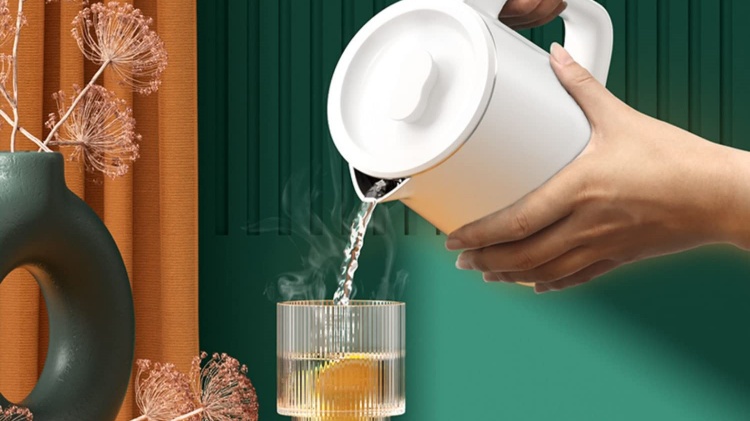
Beyond the major points already discussed, here are a few other considerations when choosing between stainless steel and silicone for travel kettles:
When considering all the factors impacting taste – heat retention, ease of cleaning, durability, and flavor impacts – stainless steel travel kettles perform better overall. The superior heat retention and durability make stainless steel the best choice for keeping water piping hot and maintaining performance for years.
While silicone does provide easier cleaning, it compromises too much on drink taste by not retaining heat well. And silicone is more prone to wear and tear over time with portable use.
For the most reliably hot, great-tasting coffee or tea while traveling, I firmly recommend choosing a stainless steel travel kettle. The Insulayte 12oz Stainless Steel Kettle is an excellent option to consider with its press lever lid, comfortable grip handle, and durable stainless steel interior.
While silicone kettles can save you money upfront, remember that a well-made stainless steel kettle is a long-term investment. Paying a bit more for stainless steel means better performance and taste that can last you many travels to come. Your taste buds will thank you!


Every travel kettle is a potential canvas waiting to be transformed into a piece that not only brews your favorite drinks but also showcases your
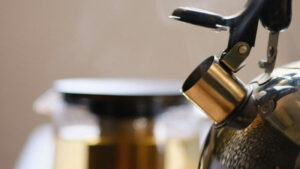
When you think of customizing your travel tea kettle, the idea of adding LED lights probably isn’t the first thing that comes to mind. However,
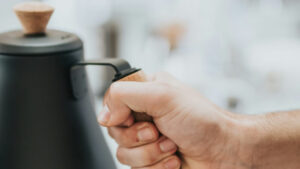
Every travel kettle enthusiast knows the pain of a lukewarm cup of tea or coffee. It’s like expecting a hug and getting a handshake. But

There’s something uniquely comforting about enjoying a hot cup of tea while on the road, but keeping your travel tea kettle warm and protected can

Every travel kettle is a potential canvas waiting to be transformed into a piece that not only brews your favorite drinks but also showcases your
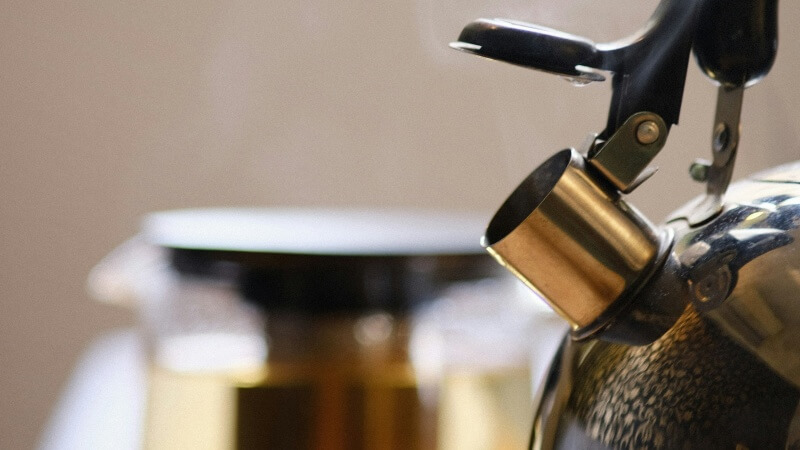
When you think of customizing your travel tea kettle, the idea of adding LED lights probably isn’t the first thing that comes to mind. However,

Every travel kettle enthusiast knows the pain of a lukewarm cup of tea or coffee. It’s like expecting a hug and getting a handshake. But

There’s something uniquely comforting about enjoying a hot cup of tea while on the road, but keeping your travel tea kettle warm and protected can
Copyright © 2024 brewgotravelkettle. All Rights Reserved.